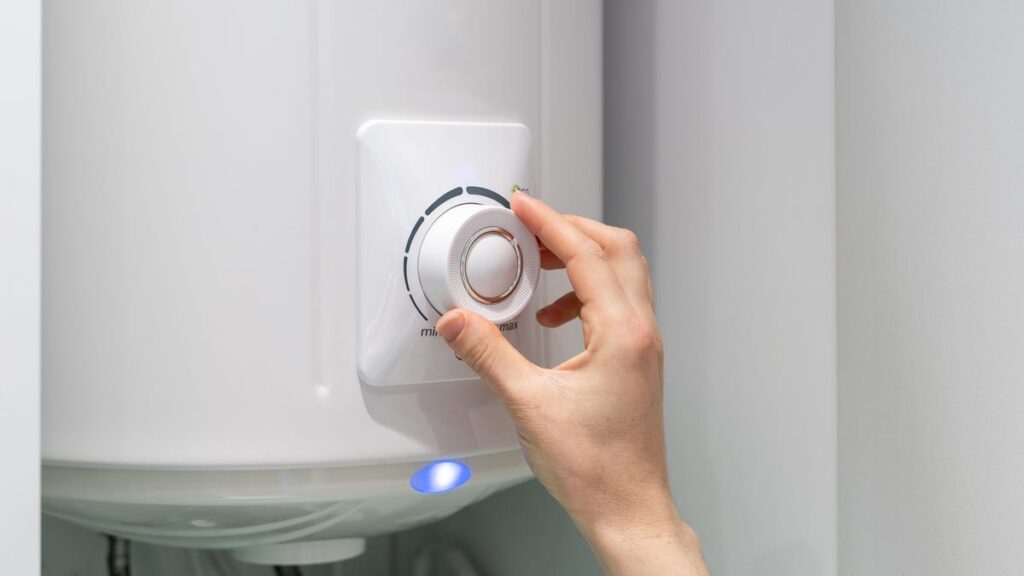Just turn the knob and save money every time you take a shower or do the dishes. It’s not too good to be true.
Hot water is a huge household expense that you may not often think about. According to the Department of Energy, it accounts for 14% to 18% of the average utility bill. The water heater for my apartment is estimated to cost $489 per year.

You may have noticed that your gas and electric bills are increasing. They are expected to continue in this direction.
If you want to save some cash, consider starting a water heater (and hot water consumption). Here’s what to know.
For an easier way to cut costs, you can turn off the lights and do laundry in a cost-effective way. You can consider buying Smart thermostat or others Energy-saving smart device.
Set the optimal temperature for your water heater
If you need a short answer, it’s 120 degrees Fahrenheit (about 49 degrees Celsius). According to the Department of Energy, many water heaters are factory-set to 140 degrees Fahrenheit, but lowering the temperature combined with other energy-saving strategies can save 4 to 22 percent of energy and can save up to $400. Even with the lower setting, you shouldn’t have problems getting the shower or dishwashing water hot enough.
The default setting of 140 F (60 C) may disappear. The latest installation manuals from major residential water heater manufacturers actually require a starting temperature of 120 F (49 C).
The lower temperature may be more about avoiding burns than saving energy. Since 140 degrees Fahrenheit can cause second- and third-degree burns in five seconds, lowering the temperature of your water heater can protect you from financial and physical pain.
Changing your water heater’s thermostat should be a matter of turning a knob or entering a temperature. If you’re not sure where your thermostat is or how to read it, you can check the owner’s manual or ask a licensed professional.
After adjusting your water heater, the Department of Energy recommends performing a simple test because the readings from the unit itself may be inaccurate. After making the changes, open the hot water faucet furthest from the water heater and measure the temperature with a thermometer. If it doesn’t match your target temperature, adjust the thermostat and try again in two hours.
Any questions?
The Department of Energy lists some further considerations if you are changing your water heater temperature.
Some dishwashers require water between 130 degrees Fahrenheit and 140 degrees Fahrenheit to operate optimally. Therefore, pay attention to the performance of your dishwasher after changing the temperature. If your dishes aren’t as clean, you may need to adjust back.
There is also a small risk of growing in 120°F water Legionella Bacteria that cause Legionnaires’ disease. The Department of Energy says the risk is low, but if you or someone you live with has a weakened immune system, you may need to raise the temperature a few degrees. A spokesman for the Centers for Disease Control and Prevention said the general concern is for larger buildings. Recent guidance from the Centers for Disease Control and Prevention (CDC) says setting your water heater at a higher temperature can kill more germs, but the risk of scalding needs to be carefully monitored, especially for young children and older adults.
23 ways to save on your energy bill right now
see all photos
Other ways to save hot water
In addition to your thermostat, you should also pay attention to your water heater’s pipes and tank. Insulating tanks and pipes can save heat when hot water is not in use. You can also install low-flow faucets and shower heads, which will reduce the amount of hot water you use without affecting your experience.
If you’re not sure whether to make these improvements yourself, check with your utility company. Utility companies may offer home energy efficiency fixes for free or at a discounted rate. In some cases, utility company personnel will come to your home to install insulation and new shower heads for free.
In addition to adjusting your home’s hot water infrastructure, you can also adjust your habits. Shower time is shorterwash clothes in cold water, Shower instead of bathing And using the dishwasher can save hot water.
The expected service life of many water heaters is approximately 10 to 20 years. If you need to replace your water heater, look for a high-efficiency one. you can start from energy Starwhich will help you find an Energy Star-certified energy-efficient water heater and provide you with a buying guide to decide on brand, energy and type, Such as no jars or storage.
You have to balance the upfront cost of a water heater with the savings over time, but water heaters, like many appliances, often reveal an estimated energy cost before purchasing.
bottom line
An easy way to save money at home—sometimes up to hundreds of dollars a year—is to lower the temperature of your water heater and use less hot water. When it’s time to replace your water heater, energy-saving options can help, and there are a variety of models to suit your needs.
After you have inspected your water heater, Rethink thermostat placement or Consider solar energy.

